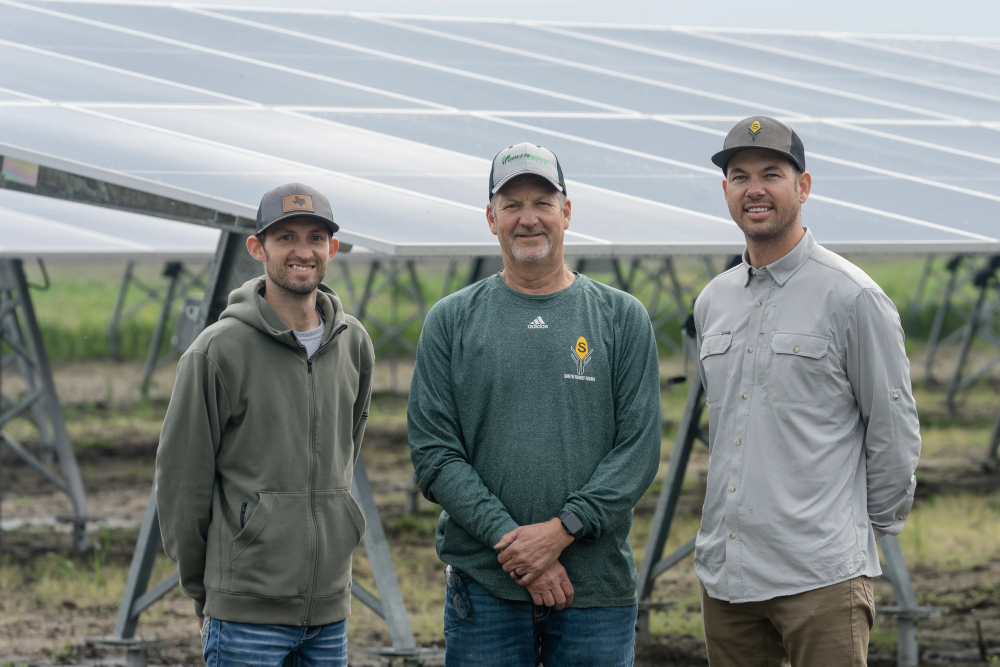Smith Family Farms – Rochester, Indiana
- Rural Energy for America Program,
- Stories

Rural Farm Powers Grain Elevator with Solar
A REAP Grant Funded By The Inflation Reduction Act Creates Savings For The Third-Generation Farm
As popcorn farmers, Kevin Smith and his wife have been known to drive to the movie theater in their rural Indiana hometown of Rochester, grab a bag of popcorn, and head back home to snack on it if there aren’t any movies that grab their attention. Popcorn, whether the movie theater of their farm full of it, looms large in their lives.
Smith and his brother run Smith Family farms, about 50 miles straight south of South Bend, carrying a family farming heritage decades after it began. Their sons are even involved now.

“This is a third generation farm,” Smith said. “It all started in 1950 when my dad started farming.”
Now, the farm covers several thousand acres, producing corn, soybean and potato crops that supply Pioneer, Skinny Pop, and Frito Lay. Smith estimates that the 500 acres of popcorn crops they grow produce 3 million pounds of popcorn every year.
What doesn’t go to Skinny Pop goes to a company that uses it for private label products. As far as Smith is concerned, the family farm fits in with the rest of the community of Rochester, a Fulton County town with just over 6,000 people.
“It’s pretty much an agricultural community. There’s not a lot of industry,” he said. “We’re mostly farming and ag dealerships.”

Except, Smith Family Farms is a bit different. After applying for and receiving a Rural Energy For America Program (REAP) grant, funded by the Inflation Reduction Act, the farm installed a sizable solar array in late 2023. The $250,000 grant covered about 40% of the cost of the array, which has 25 panels arranged in five rows of five, covering about an acre.
On top of the REAP grant, since the array is completely American made, Smith Family Farms is able to recover the maximum allowable tax credit — up to 40% — to further assist with recovering the cost of the investment. Projections indicate that the array will provide all the power the family will need to operate its grain elevator for the season, which generally costs about $30,000 each year.
“With the money available, it made it a pretty lucrative deal,” Smith said of the federal grant and tax credits. “So, we decided to go after the grant and it came through.”
The array will allow the farm to save money on electricity expenses and potentially catch the eye of other farmers and producers in the area. With a grid that large, it’s visible.

Throughout the process of considering solar panels for the family farm, even after having panels on his family home for about a decade, Smith said he remembered the advice given to him by a former agriculture teacher.
“Don’t be the first to try something, but don’t be the last,” he said, quoting his teacher. “We think the return will be about five years, but we’re still waiting to see. We’ll know more in a few months. But, it’ll be a good ROI for us.”
The Inflation Reduction Act (IRA), passed by the 117th Congress and signed by President Joe Biden, is a piece of federal legislation that aims to reduce inflation by lowering the cost of prescription medications, investing in domestic energy production and promoting clean energy, among other objectives.
Get the latest on solar straight to your inbox.
Fight for your solar rights.
Everyone has the right to go solar. Spread the sunshine nationwide and in your local community by taking action, joining events, and more.